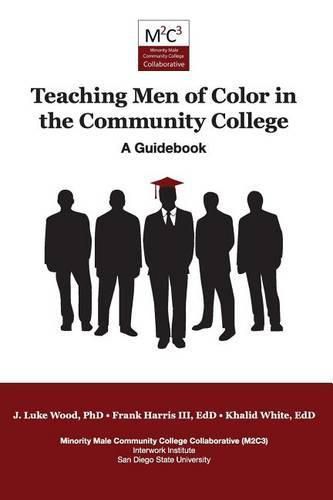Readings Newsletter
Become a Readings Member to make your shopping experience even easier.
Sign in or sign up for free!
You’re not far away from qualifying for FREE standard shipping within Australia
You’ve qualified for FREE standard shipping within Australia
The cart is loading…






This guidebook is divided into four main parts. In Part 1: Foundations of Success for Men of Color, the theoretical perspectives undergirding a revised teaching and learning enterprise that prioritizes the success of men of color are discussed. Also explored are common barriers and challenges facing men of color that necessitate enhanced teaching practices. A key focus of these barriers are on environmental factors (external pressures that occur outside of college that influence student success in college) and on the socialization of men of color in education. Parts II and III articulate the promising practices derived from the comprehensive study of faculty. Specifically, Part II: Building Relationships with Men of Color discusses the establishment of personal relationships with men of color as a foundational precursor to efficacious teaching practices. In Part III: Promising Teaching Practices, the authors address the role of relevancy and interactivity (among other factors) in effectively communicating academic content to men of color. The guidebook concludes with Part IV: A Note to Instructional Leaders with strategies that academic leaders can employ to inculcate the values and approaches discussed in this volume in their departments and colleges.
$9.00 standard shipping within Australia
FREE standard shipping within Australia for orders over $100.00
Express & International shipping calculated at checkout
This guidebook is divided into four main parts. In Part 1: Foundations of Success for Men of Color, the theoretical perspectives undergirding a revised teaching and learning enterprise that prioritizes the success of men of color are discussed. Also explored are common barriers and challenges facing men of color that necessitate enhanced teaching practices. A key focus of these barriers are on environmental factors (external pressures that occur outside of college that influence student success in college) and on the socialization of men of color in education. Parts II and III articulate the promising practices derived from the comprehensive study of faculty. Specifically, Part II: Building Relationships with Men of Color discusses the establishment of personal relationships with men of color as a foundational precursor to efficacious teaching practices. In Part III: Promising Teaching Practices, the authors address the role of relevancy and interactivity (among other factors) in effectively communicating academic content to men of color. The guidebook concludes with Part IV: A Note to Instructional Leaders with strategies that academic leaders can employ to inculcate the values and approaches discussed in this volume in their departments and colleges.